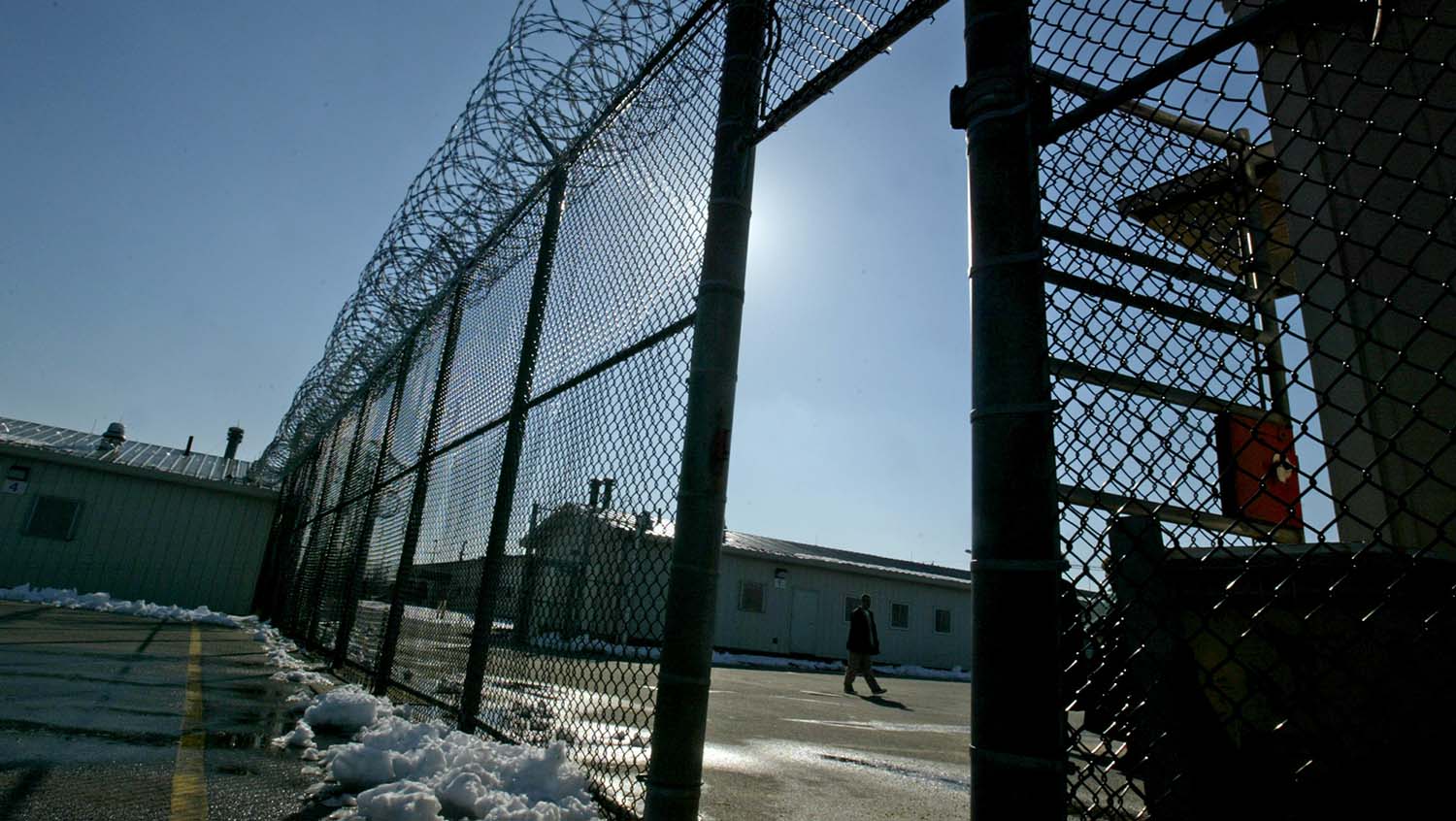End Involuntary Addiction Treatment in Prison, BMC Experts Urge Mass. Lawmakers
December 14, 2021

Getty Images
Tyshaun Perryman saw his own father sent to prison for treatment. The recovery coach told state officials incarceration is not what successful intervention looks like.
Filing a petition to commit his father involuntarily to addiction treatment in a prison was the hardest thing Tyshaun Perryman, CARC, has ever had to do. But at the time, he felt it was necessary because the situation had grown out of control.
In Massachusetts, someone can be involuntarily committed for substance use treatment under the state’s Section 35 law if two criteria are met: the individual has a substance use disorder (SUD) and there is a likelihood of serious harm to their self or others as a result of the SUD. Currently, men who are committed under this law receive treatment in correctional settings and not in standard treatment settings.
“Prisons and jails are not the place we would send a patient with any other disease besides addiction,” said Perryman, an addiction recovery coach at Boston Medical Center (BMC), who recounted the painful experience to Massachusetts lawmakers last month. “So why do we keep doing it?” he asked.
At a November 8 hearing of the state legislature’s Joint Committee on Mental Health, Substance Use and Recovery, Perryman joined BMC colleagues Sarah Bagley, MD, MSc, medical director of the CATALYST clinic, and Deborah Goldfarb, MSW, LICSW, director of Behavioral Health, Population Health, in urging elected state officials to reform the Section 35 process for men.
The Baker administration ended civil commitments of women to prison settings for substance use treatment in 2016. Two bills introduced by Senator Cindy F. Friedman (S. 1285) and Representative Ruth Balser (H. 2066) would do the same for men.
The use of correctional facilities for addiction treatment is not new, but it got a renewed spotlight when Suffolk County Sheriff Steve Tompkins proposed using Section 35 to address the public health emergency in the area of Boston known as “Mass and Cass” by converting a former ICE detention facility into temporary housing for people living in the encampments. During the pandemic, drug overdose deaths in the U.S. surpassed 100,000 between April 2020 and April 2021, a record for any 12-month period.
An ‘unhealthy and inhumane’ setting for substance use treatment
Bagley, a physician who specializes in the treatment of teens and young adults with SUD, warned against traumatizing instead of treating individuals who deserve a certain standard of care.
“Because many individuals with substance use disorders also have co-occurring mental health disorders, treatment of psychiatric disorders is also critical,” Bagley testified. “Yet by sending men who have been committed under Section 35 to correctional environments, we are sending a clear message to both those individuals and also the greater community that it is acceptable to criminalize substance use and treatment of substance use disorder.”
Goldfarb spoke about her firsthand experience as a mental health professional watching people with SUD be sent to prison for treatment.
“Imprisonment is an unhealthy and inhumane environment to send individuals for treatment, and the environment itself can exacerbate symptoms of a substance use disorder or mental illness,” Goldfarb told lawmakers. “Within correctional settings, security will always take precedence over recovery.”
Perhaps the most personal testimony came from Perryman, who spoke candidly about his experience with his father’s addiction treatment.

Testimony from Tyshaun Perryman, CARC
“I am a recovery coach with BMC’s Project CHORUS and a member of MOAR, Massachusetts Organization for Addiction and Recovery services. Project CHORUS is a research study that measures the effectiveness of recovery coaches as an intervention to prevent people who inject drugs from contracting HIV.
As the recovery coach, my job is to take my lived experience and break down the barriers that people with substance use disorders face on their recovery path. I’ve seen what successful interventions look like, and involuntary commitment to treatment in a prison or jail is not one of them.
My experience with Section 35 is deeply personal. I had to petition for a Section 35 commitment for my own father after his issues with mental health and substance use grew out of control. As a family, we faced the stigma of sending their loved one into captivity against their will, a stigma faced by others in the African American community who want to get help for their family.
Filing that petition for my father was the hardest thing I have ever done in my life. In the courtroom, I remember looking at him as he experienced shame, bewilderment, and nothingness at the same time, knowing involuntary commitment to prison was not the answer. He was supposed to be there for treatment, but instead, my father, a 65-year-old Army veteran, lived in a cell under the supervision of prison guards. He even had to spend a large piece of his Social Security check to make expensive phone calls. He was not treated like a patient. He was treated like he was guilty of a crime. Being treated that way did not help him. He relapsed in two days.
Incarceration in a prison or jail is psychologically counterintuitive for Black men, who are already victimized by mass incarceration and do not experience a feeling of rehabilitation in a prison environment.”


